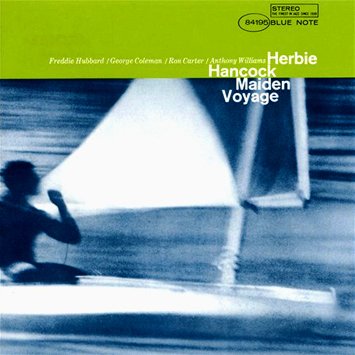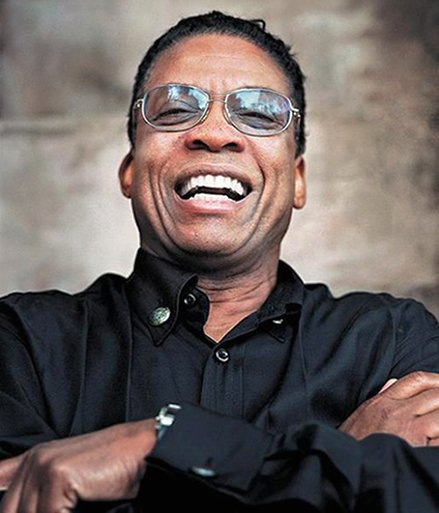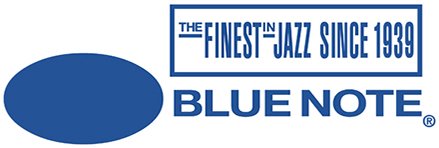Hard bop/jazz modal: «Maiden Voyage» [ESP/ENG]
George Coleman (saxo tenor), Freddie Hubbard (trompeta), Herbie Hancock (piano), Ron Carter (contrabajo) y Tony Williams (batería). Extraído del álbum Maiden Voyage (1965).
Este es un álbum conceptual de estilo post-bop destinado a crear una atmósfera oceánica y los músicos desarrollan la idea utilizando el espacio y la dinámica de mareas. «Maiden Voyage», «The Eye of the Hurracane» y «Dolphin Dance» se convirtieron en estándars de jazz. Herbie Hancock consigue alcanzar un equilibrio perfecto entre el jazz accesible y el hard bop arriesgado. En aquel momento ya había pertenecido al «segundo gran quinteto» del mítico trompetista Miles Davis durante dos años y había integrado sus experimentos modales. Además, Carter y Williams, sus compañeros en la sección rítmica de Davis, también participan activamente en el álbum, dando una sensación de cohesión. Todos los temas son originales de Hancock conteniendo sobrias melodías, provocativas armonías e imprevisibles solos.
This is a post-bop style conceptual album intended to create an oceanic atmosphere and musicians develop the idea by using space and tidal dynamics. “Maiden Voyage”, “The Eye of the Hurricane” and “Dolphin Dance” became jazz standards. Herbie Hancock manages to strike a perfect balance between accessible jazz and daring hard bop. At that time he had already belonged to the legendary trumpeter Miles Davis’ “Second Great Quintet” for two years and had integrated his modal experiments. In addition, Carter and Williams, his partners in Davis’ rhythm section, also actively participate in the album, giving a sense of cohesion. All the themes are Hancock originals containing sober melodies, provocative harmonies and unpredictable solos.

Puesto que George Coleman también había formado parte del grupo de Davis hasta el año anterior, se podría decir que estamos ante una reedición de éste. Sin embargo, el que marca la diferencia es Freddie Hubbard, un virtuoso y versátil trompetista que inicialmente había estado en los Jazz Messengers del batería Art Blakey tocando hard bop, pero que luego apareció interpretando post-bop en The Blues and the Abstract Truth (1961) del saxofonista tenor Oliver Nelson, free jazz en Free Jazz: A Collective Improvisation (1961) del saxofonista alto y padre de este estilo Ornette Coleman, y avant-garde en Out to Lunch! (1964) del saxofonista alto, flautista y clarinetista bajo Eric Dolphy. Maiden Voyage es un ambicioso y brillante álbum, uno de los más importantes de los años sesenta, que muestra a Hancock en su mejor momento como líder, solista y compositor.
Since George Coleman had also been part of Davis’ group until the previous year, one could say that we are dealing with a reissue of it. However, the one who makes the difference is Freddie Hubbard, a virtuoso and versatile trumpeter who had initially been in drummer Art Blakey’s Jazz Messengers playing hard bop, but later appeared performing post-bop on tenor saxophonist Oliver Nelson’s The Blues and the Abstract Truth (1961), free jazz on alto saxophonist and father of the style Ornette Coleman’s Free Jazz: A Collective Improvisation (1961), and avant-garde on alto saxophonist, flutist and bass clarinetist Eric Dolphy’s Out to Lunch! (1964). Maiden Voyage is an ambitious and brilliant album, one of the most important of the 1960s, which shows Hancock at his best as a leader, soloist and composer.

La sección rítmica hace una introducción y luego entran Coleman y Hubbard para exponer casi todo el tema al unísono. Coleman comienza su solo con calma, pero luego muestra su faceta más elocuente y creativa. Le sigue Hubbard con frases bien escogidas y valentía para tocar cosas diferentes. A continuación entra Hancock con una línea melódica original y llena de contrastes imitando las olas del mar. Para concluir, el grupo reexpone el tema y Hubbard sigue tocando algunas notas desvaneciéndose.
The rhythm section gives an introduction and then Coleman and Hubbard enter to lay out most of the theme in unison. Coleman starts his solo calmly, but then shows his most eloquent and creative side. Hubbard follows with well-chosen sentences and courage to play different things. Next Hancock comes in with an original melodic line full of contrasts imitating the waves of the sea. To conclude, the group re-exposes the theme and Hubbard continues to play some notes fading out.

Translated with the help of DeepL
0
0
0.000


¡Enhorabuena!
✅ Has hecho un buen trabajo, por lo cual tu publicación ha sido valorada y ha recibido el apoyo de parte de CHESS BROTHERS ♔ 💪
♟ Te invitamos a usar nuestra etiqueta #chessbrothers y a que aprendas más sobre nosotros.
♟♟ También puedes contactarnos en nuestro servidor de Discord y promocionar allí tus publicaciones.
♟♟♟ Considera unirte a nuestro trail de curación para que trabajemos en equipo y recibas recompensas automáticamente.
♞♟ Echa un vistazo a nuestra cuenta @chessbrotherspro para que te informes sobre el proceso de curación llevado a diario por nuestro equipo.
🏅 Si quieres obtener ganancias con tu delegacion de HP y apoyar a nuestro proyecto, te invitamos a unirte al plan Master Investor. Aquí puedes aprender cómo hacerlo.
Cordialmente
El equipo de CHESS BROTHERS